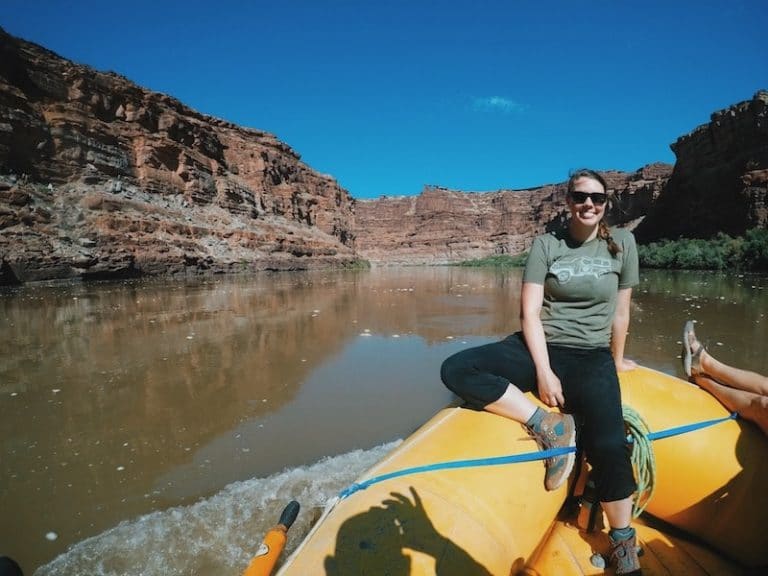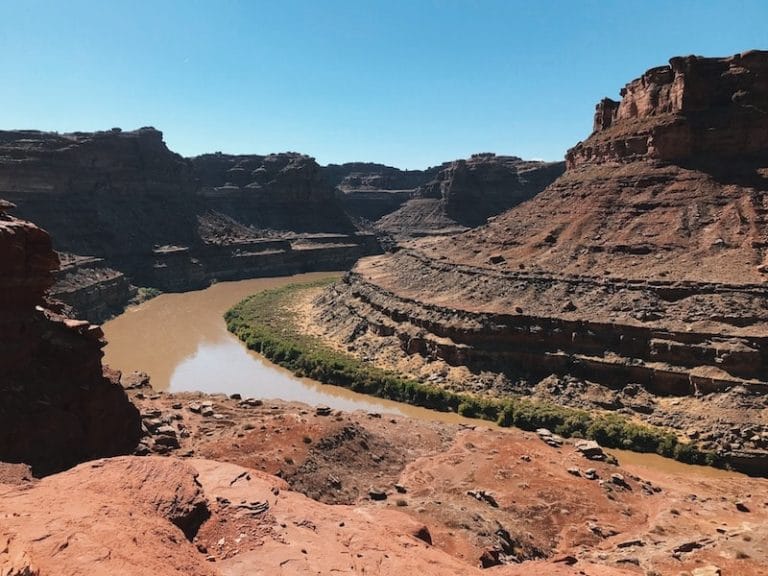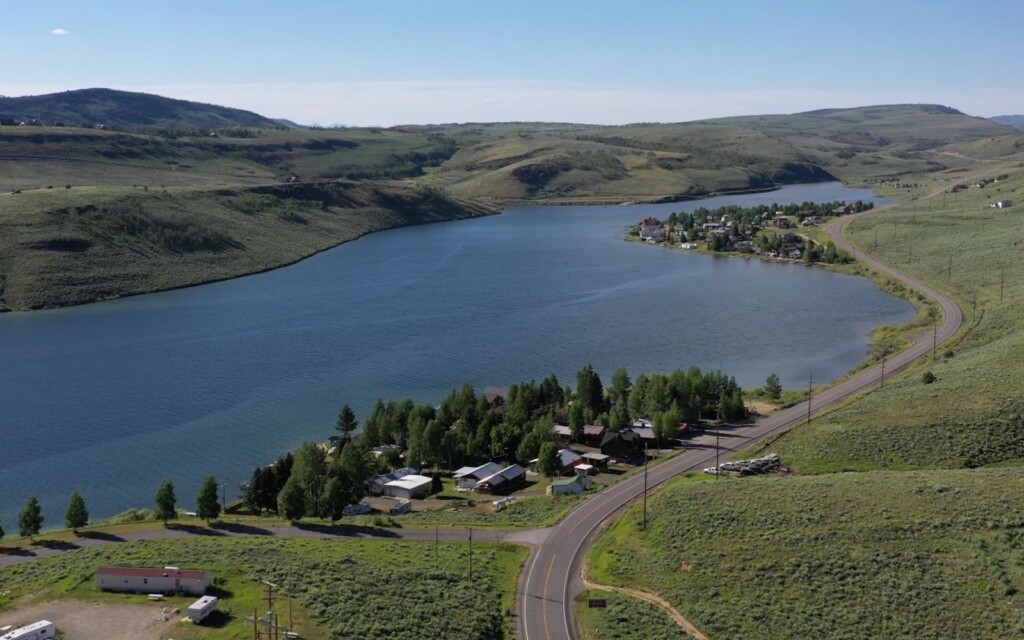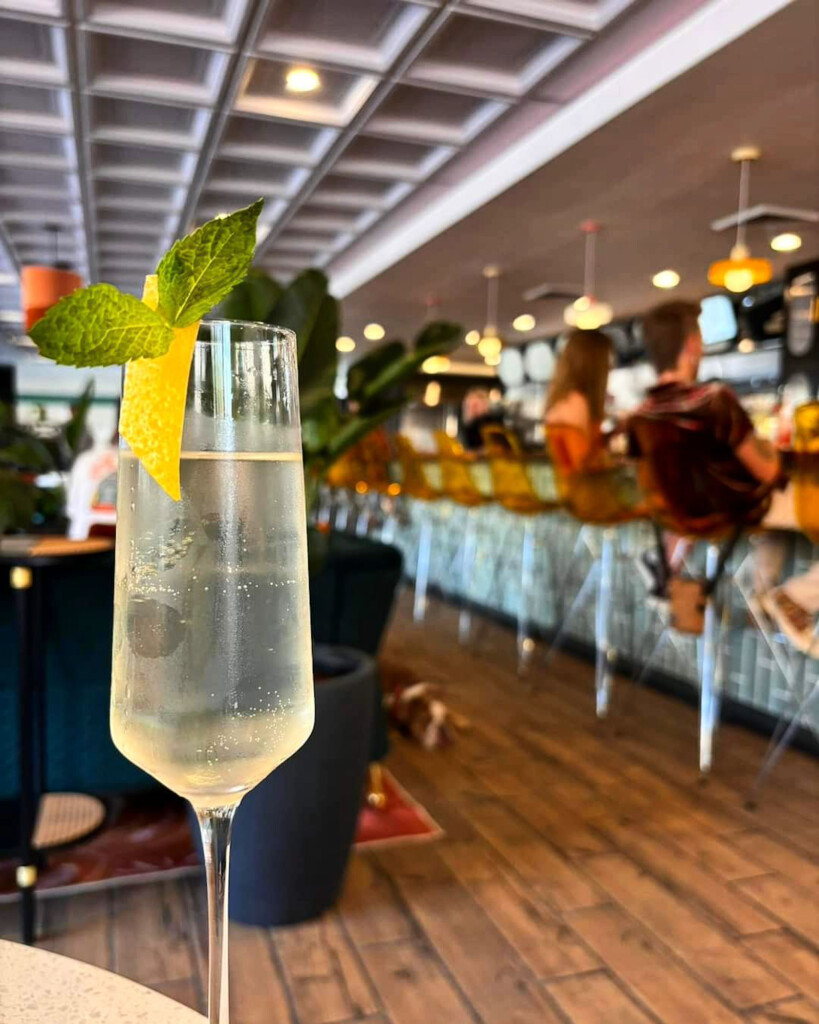
As we plunge through the roiling waters of Big Drop 3, a class IV rapid on the Colorado River’s path through Cataract Canyon in Southern Utah, I find myself repeating the same thought over and over while whiteknuckling my anchor points: “Stay in the boat. Just stay in the boat.”
It’s mid-June — peak water flow season — and the river is running at roughly 38,000 cubic feet per second. For comparison, just a few months from now, in September and October, it will drop to around 3,000 cubic feet per second.
The objective, according to our guide and oarsman, Jake, is to avoid Satan’s Gut, a large hydraulic feature that could easily flip our 18-foot inflatable oar raft strapped down with all of our gear — as it has done to many boats before.
As we descend the rapid, leaning into the waves from the bow while Jake navigates the raft, there’s a whistle from behind as another boat quickly gains on us. Moments later, we hear a pop as a strong eddy, known fittingly as Purgatory, snaps one of Jake’s oars from the oarlock. He yells at us to hold on while cranking on his solitary oar against the current to keep us from the flip zone and a cold, scary swim down the remainder of the rapids.
I braced for the worst, but moments later Jake is whooping excitedly behind us as we ride the Thank God Current away from the belly of the beast and down the remainder of the rapids.
This all feels rather fitting because for the first time in over a decade, this agnostic writer prayed to the Universe — or whomever might be out there — to keep me in the damn boat!

It’s day four on our five-day, 96-mile rafting journey along the Colorado River with Moab-based Sheri Griffith Expeditions, one of only a dozen outfitters permitted to guide trips through Canyonlands National Park. Tomorrow, we will conclude the last of the 14 miles of rapids that occur in the 46-mile-long Cataract Canyon, which begins at the confluence of the Green and Colorado rivers in Canyonlands National Park. With the potential to ride 15-to-20-foot waves surrounded by towering red rocks, Cataract Canyon is a premier whitewater rafting destination.
Although thrilling, the whitewater rapids are just one exciting highlight of a trip curated by Sheri Griffith Expeditions, which has been running river expeditions out of Moab since 1971. We took day hikes to swim in a seasonal waterfall and stand in awe of several-thousand-year-old pictographs and food storage structures, known as granaries, built into the cliffs by the ancestral Puebloans.

Our guides pointed out unique arch structures 2,000 feet up the canyon walls and half-inch fragments of 350-million-year-old crinoid fossils in rocks beneath our feet, remnants of marine life from when a shallow sea covered much of the state.
While drifting slowly along flat water, the guides explained how the geological layer cake hulking around us was formed over millions of years as wind and water from distant mountain ranges deposited sediment. Over time, the Green and Colorado Rivers, along with heavy rain, began to erode the layers and create the canyons.
We saw bighorn sheep precariously perched on the steep canyon walls, munching on sagebrush and mostly camouflaged, but spotted thanks to a glimpse of motion from their white, shaggy bottoms.
Floating alongside the boat in our life jackets, I felt acutely aware of what a small blip this trip is in the immense history of these canyons.
We camped each evening at a new spot along the river, seeking shade under native cottonwoods and coyote willows, watching blue heron fish nearby, and keeping cool with dips in the river. Our guides prepared breakfast, lunch and dinner, adamantly refusing our help, and punctuating our days with meals far beyond what I’d ever expect to emerge from a cooler on an inflatable boat. Each night, we stared up at the stars before climbing into our tents on the river bank, a little bit sandy and sunburnt, but content just the same.
On our last day on the river, we woke up to a thunderstorm and finished the remainder of the rapids under a pouring rain. I took off my hood and let myself get completely soaked as we made our way down the river and into Lake Powell, where we would take out and make our way back up to Moab — usually by plane, but this time by car due to weather.
But as the day wore on, the storm disappeared and we were left to finish our trip in sunshine, watching dozens of fleeting waterfalls cascade down the final stretch of canyon from the torent.
Before we took out, we popped a bottle of champagne — a Sheri Griffith Expeditions tradition — and toasted to our trip. For some, the thrill of the rapids is the experience that will stick with them, but for me, it was the feeling of getting to know and experience a place in such detail — from the towering canyons and minute fossils, to the diverse wildlife and first human inhabitants — that made the trip truly exceptional and etched it in my mind forever.





